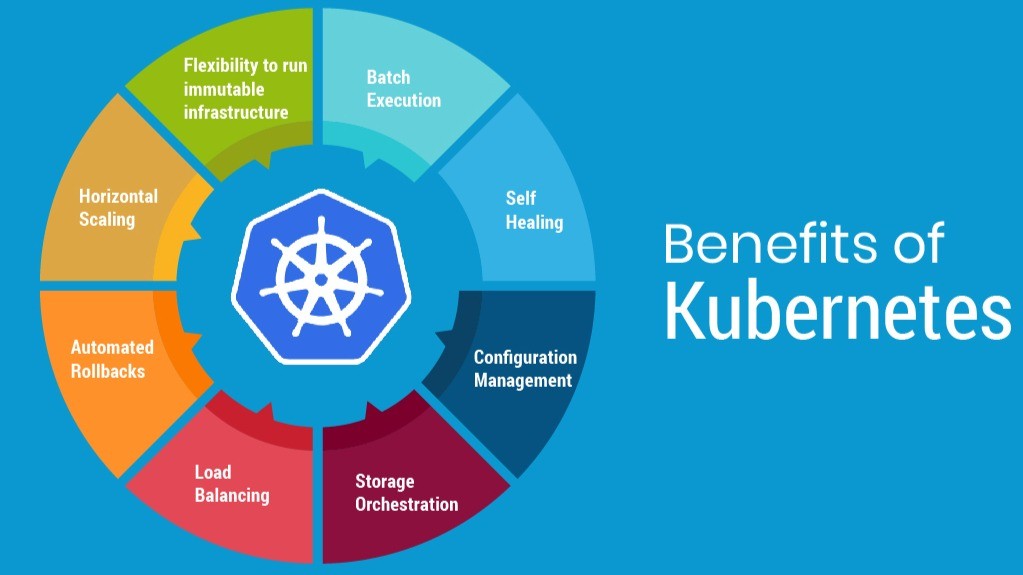
Kubernetes: Benefits & Key Components
CH. IZHAR AHMAD
CTO | Cloud Architect | DevOps Specialist | Solution Architect | Agile Leader | Technical Project Manager
What is Kubernetes?
Kubernetes, commonly referred to as as K8s, is an open-source platform designed to automate the deployment, scaling, and management of containerized applications. Originally developed by Google, it is now maintained by the Cloud Native Computing Foundation (CNCF). Kubernetes has become the industry standard for container orchestration, enabling organizations to efficiently manage their applications.
What's the significance of Kubernetes?
In today’s cloud computing landscape, applications are frequently architected as microservices, each running within its own container. Managing these containers at scale—ensuring seamless deployment, automatic scaling based on demand, and recovery from failures—poses significant challenges. Kubernetes addresses these complexities by providing a robust framework for container orchestration. This allows developers and operations teams to focus on delivering value to users, rather than being bogged down by the intricacies of container management.
Benefits of Kubernetes:
Scalability:
Kubernetes dynamically adjusts the scale of applications based on demand, automatically scaling up during peak periods and scaling down during low-demand times to optimize resource utilization.
Portability:
Kubernetes abstracts the underlying infrastructure, allowing applications to run consistently across various environments, whether on-premises, in the cloud, or in hybrid configurations. High Availability: Kubernetes ensures high availability by distributing applications across multiple cluster nodes, automatically restarting failed containers, and replacing or rescheduling them as necessary.
Rolling Updates and Rollbacks:
Kubernetes facilitates seamless application updates without downtime. It can gradually roll out new versions while monitoring application health and automatically roll back if any issues are detected.
Self-Healing:
Kubernetes is equipped with self-healing capabilities, continuously monitoring application health, automatically restarting failed containers, and maintaining the desired state by replacing or rescheduling as needed.
Configuration management:
Kubernetes allows for the seamless separation of configuration data from application code, ensuring flexibility and consistency across environments. This approach enhances security, simplifies updates, and supports dynamic scaling, making applications more resilient and easier to manage.
Key Components of Kubernetes and their Functions:
Cluster:
A Kubernetes cluster consists of nodes (physical or virtual machines) that provide the infrastructure for running applications.
Node:
A node in Kubernetes is a worker machine that executes tasks within the system. It is responsible for running pods and is managed by the control plane. Nodes can be either physical machines or virtual machines.
领英推荐
Pods:
A pod is the fundamental unit in Kubernetes, representing an instance of a process running in your cluster. Typically, a pod contains a single container, although it can also include multiple containers that share network and storage resources.
Service:
A service in Kubernetes is an abstraction that defines a logical set of pods and the policies for accessing them. It ensures that applications remain accessible despite the dynamic nature of pod lifecycles.
Deployment:
A deployment is critical for maintaining a specified number of pod replicas at all times. It enables modifications, rollbacks, and scaling of applications as needed.
ConfigMap and Secret:
ConfigMap and Secret components are used to manage configuration data separately from application code. This separation ensures that configuration details remain independent of image content. Secrets are specifically designed to handle sensitive data, such as passwords and keys.
Ingress:
Ingress is an API object that controls external access to services within a cluster, typically related to HTTP traffic. It provides features such as load balancing, SSL termination, and name-based virtual hosting.
Persistent Volumes (PV) and Persistent Volume Claims (PVC):
PV and PVC are essential components for managing storage in Kubernetes environments. A Persistent Volume represents a storage resource within the cluster, while a Persistent Volume Claim is a user's request for storage allocation.
Kubelet:
The Kubelet is an agent that runs on each node to ensure the operation of containers within pods. It communicates with the control plane to maintain the desired state of the node.
Kube-Proxy:
Kube-Proxy is a network proxy that runs on each node, managing network rules and facilitating communication between pods and services within the cluster.
Control Plane:
The control plane is responsible for managing the overall state of the cluster, including task scheduling, controller management, and API operations. It consists of several key components:
API Server: The API Server is the interface for the Kubernetes control plane, handling all API requests within the cluster.
Scheduler: The Scheduler assigns pods to nodes based on resource availability and other constraints.
Controller Manager: The Controller Manager ensures that the cluster’s desired state is maintained.
Etcd: Etcd is a distributed key-value store that holds the configuration and state data of the cluster.
Conclusion:
Kubernetes is a powerful container orchestration tool that has revolutionized the deployment and management of applications. Its ability to manage complex containerized environments makes it an indispensable component of modern IT infrastructure. Understanding its benefits, and key components will enable you to fully harness the potential of Kubernetes for enhancing your organization’s efficiency and growth. Whether you are running microservices, managing big data workloads, or deploying across multiple cloud platforms, Kubernetes offers the flexibility and scalability needed to meet these demands effectively.
DevOps | Docker | AWS | CI/CD | Github | Gitlab | Community Builder |
3 个月Worth reading. ??
| Business Development | Upwork Specialist | Lead Generation | upwork bidder |
3 个月Very helpful!